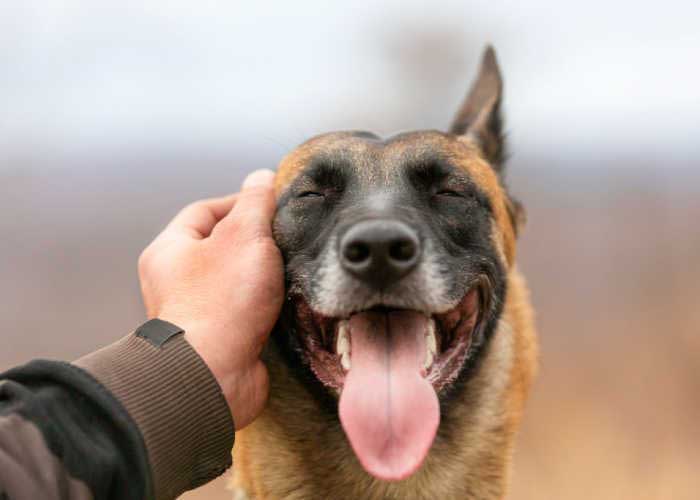Table of Contents
With all the breeds available, how do you go about choosing the right pooch for you? Do you decide on the size, gender, or dog’s temperament?
Canine temperament refers to a dog's character, outlook, or nature. It is what distinguishes one breed from another.
Dogs acknowledged by American Kennel Club have national parent groups that outline the appropriate temperament for each breed.
However, other factors besides ancestry affect a dog's temperament. The environment, in addition to genes, also has an impact on how it perceives humans and other animals.
For instance, dogs are expected to conform to the canine breed standard, but we cannot ignore the fact that each dog is an individual.
Although members of the same species, dogs vary not just in appearance but also disposition. Nevertheless, why does it matter?
Dog Temperament Test: Understanding the Importance of Dog Temperament
Dog temperament is a term used to describe how an individual dog behaves.
It describes the way that dogs interact with their owners and other people, as well as how they react when faced with new situations or challenges.
Dog behaviorists use this term to describe all of the different ways that dogs communicate with humans, and it can be very useful for understanding why your dog acts in certain ways.
In dog ownership, the dog’s personality is the most crucial element to take into account before bringing one into your home.
Although you could be looking for a specific color or size, knowing its behavior will help determine if it fits your way of life.
Do you consider yourself sporty enough to have a running partner or do you prefer a couch potato?
While some are preserved, others are open to strangers. Some are lively and driven, whilst others are relaxed.
So, you see, a dog’s behavior is vital in choosing one that is your best match, which is why taking the dog temperament test is such a good idea.
Why Take the Dog Temperament Test?
A dog temperament test is a series of tests to measure the dog's personality.
These tests are designed to evaluate the dog's behavior and provide an indication of how well it will fit into your family and lifestyle.
Dog temperament testing can be done in a variety of ways, but it is most commonly done by using a series of questionnaires or interviews with you and your veterinarian.
AKC Temperament Test
Introduced in 201, The AKC Temperament Test measures how the dog responds to numerous stimuli. To provide insight into your dog's behavior, the procedure has 6 categories that include:
- Social
- Auditory
- Visual
- Tactile
- Proprioceptive (motion)
- Unexpected stimulus
ATT's mission is to inform dog owners about the temperaments of the breeds they possess.
By taking the test, you may determine how closely your purebred dog behaves in comparison to the breed standard.
For mixed-breed dogs, you will gain insight into each dog's personality.
The owner may apply for the title certificate and have the dog's record appear on the AKC's title record if the dog passes the ATT.
RELATED: Designer Dog Breeds
American Temperament Test Society
Established in 1977, the American Temperament Test Society, Inc. promotes standardized canine temperament assessment. This nationwide nonprofit group advocates the welfare of all dog breeds.
The exam measures how our canine friends respond to events and circumstances in daily life.
It is conducted by taking a stroll through a park or neighborhood. The dog will be exposed to touch, aural, and visual cues during this stroll.
This will show whether the dog can distinguish between potentially dangerous and non-threatening situations.
Additionally, it emphasizes and gauges many temperamental traits such as stability, shyness, antagonism, friendliness, attentiveness, and protectiveness.
Ten subtests are included in the test, which is organized into five categories:
Behavior Toward Strangers
Subtest 1: Neutral stranger — To assess the dog’s reaction to passive socialization and the dog’s protective instinct.
Subtest 2: Friendly stranger — To rate the dog’s active social skills.
Reaction to Auditory Stimuli
Subtest 3: Hidden Noise — To test alertness and curiosity.
Subtest 4: Gunshots — To measure the dog’s recovery response to a sudden noise.
Reaction to Visual Stimulus
Subtest 5: Umbrella — To check the dog’s reaction to a sudden visual stimulus.
Reaction to Tactile Stimuli
Subtest 6: Plastic Footing — To rate the dog’s sensitivity to unusual footing.
Subtest 7: Wire Footing — To measure its behavior and test its ability to recover from the fear of unusual footing.
Self-Protective/Aggressive Behavior
Subtest 8: Non-Threatening — To check the dog’s alertness to an unusual situation.
Subtest 9: Threatening — To judge the dog’s ability to recognize when an unusual situation turns into a provocation.
Lastly, Subtest 10: Aggression — To evaluate the dog’s protective instincts.
The dog will be evaluated based on his performance.
He fails the test when he exhibits unprovoked violence, panic without recovery, or severe avoidance. But if he passed, your dog will receive a certificate.
Volhard’s Puppy Aptitude Testing
Stores use puppy aptitude exams to assess litter and assist consumers in choosing their puppies.
To get the right pup for the right home, Volhard Dog Nutrition developed a simple yet remarkably accurate test in predicting inherited behavioral traits and how the puppy will develop into an adult.
The Volhard Puppy Aptitude Test or PAT consists of ten tests and has a scoring range of 1-6. The tests are carried out sequentially and in the listed order.
Each test is graded separately and evaluated according to its own merits. There are no winners or losers, and the scores are not averaged.
The tests are as follows:
- Social Attraction – the dependence or confidence in people
- Following – having the desire to follow a person
- Restraint – the tendency to be dominating or submissive, and the ease of handling situations
- Social Dominance – the extent of accepting social dominance
- Elevation – the level of accepting dominance while in a non-controlling situation, as at the vet or the groomer
- Retrieving – the extent of readiness to assist you
- Touch Sensitivity – is a significant indicator of the kind of training equipment needed and measures how sensitive one is to touch
- Sound Sensitivity – the degree of sensitivity to sound, such as thunder or loud noises
- Sight Sensitivity – the degree of reaction to a moving item, such as pursuing bicycles, kids, or squirrels
- Stability – the level of a startle reaction to an unfamiliar object
Shelter Evaluations
Shelters use temperament tests to identify dogs with behavioral issues before offering them for adoption.
For some, these tests seemed to be an important breakthrough. Others thought them to be controversial.
As a dog may be under a lot of stress, temperament testing at a shelter or rescue may be challenging. This indicates that the dog might behave differently than it would in normal situations.
A dog could be wrongly labeled as aggressive by the temperament test, resulting in a more difficult adoption.
Yet, temperament tests are still useful to determine the type of home that is best for a dog. It can also inform personnel and future adopters of a dog's strengths and weaknesses.
SAFER Test
ASPCA’s Safety Assessment for Evaluating Rehoming helps identify the risk of future aggression and behavioral support needed before adoption for every dog in a shelter.
To aid shelters in raising the success rate of adoptions, ASPCA provides shelters the updated material and approaches to gather information on dogs in their care.
Match-Up II Assessment
The Animal Rescue League of Boston (ARL) provides this special service as part of their dedication to assisting as many of their canine companions as they can in finding homes.
ARL is pleased to provide Match-Up II, an assessment and rehoming tool, to all animal shelters to help them find new homes for the dogs they are caring for.
The dog temperament assessment includes a behavior evaluation, automatic personality and triage scores, outcome reports, and suggested training or additional actions.
Assess-A-Pet Protocol
The test aids in informing decisions about euthanasia, adoption, and safety; pairing dogs with new families, and asking owners questions following returns for aggression in the new home.
Sue Sternberg has spent decades creating and improving dog temperament evaluation methods to aid trainers and shelter staff in determining the possibility that a dog may exhibit aggressive behaviors.
Her latest book, Assessing Aggression Thresholds in Dogs, contains Sue's most recent protocols founded on the idea that a dog's friendliness is the primary indicator of its propensity for violence.
FAQs about Dog Temperament Test
At what age can you tell a dog's temperament?
In conclusion, it is possible to gauge a puppy's temperament as early as four to five weeks of age, yet the older they get, the more accurate your temperament test will be.
A breeder should be able to give you a lot of information about your puppy's personality before the age of 6 to 8 weeks.
What dog has the best temperament?
If there's one dog that typifies a friendly canine companion, it is the Golden Retriever. This pooch is loyal, fun, and just always seems to be happy with everyone it meets.
What are the different dog temperaments?
There are three basic dog temperament groups: assertive/aggressive, neutral, and passive.
By establishing boundaries and guidelines, you can lessen your dog's aggressive or assertive behavior.
Expose your passive pet to as many pleasant experiences as you can to help them develop better coping mechanisms and self-confidence.
If you have a neutral dog, be thankful!
Dog Temperament Test: Summary
Understanding the behavioral patterns that have been present since puppyhood will let you anticipate what to expect and how you might impact it.
Although dog temperament is strongly influenced by genes, you can socialize your dog and give it the right training.
The puppy's experiences will have a significant impact on how it views the world as it grows.
Positive interactions increase the likelihood that it will develop better social skills, avoiding displays of hostility or timidity.
You can enroll your dog in AKC’s Canine Good Citizen, which is an expert-made program designed to teach good manners to dogs and responsible dog ownership to their owners.
You cannot change a dog’s genetics. That being said, it is still possible to manage and improve how your dog responds to and interacts with his environment.
There are many breeds to choose from but there is a secret to getting your best match– that is doing your homework to find the perfect one.

















